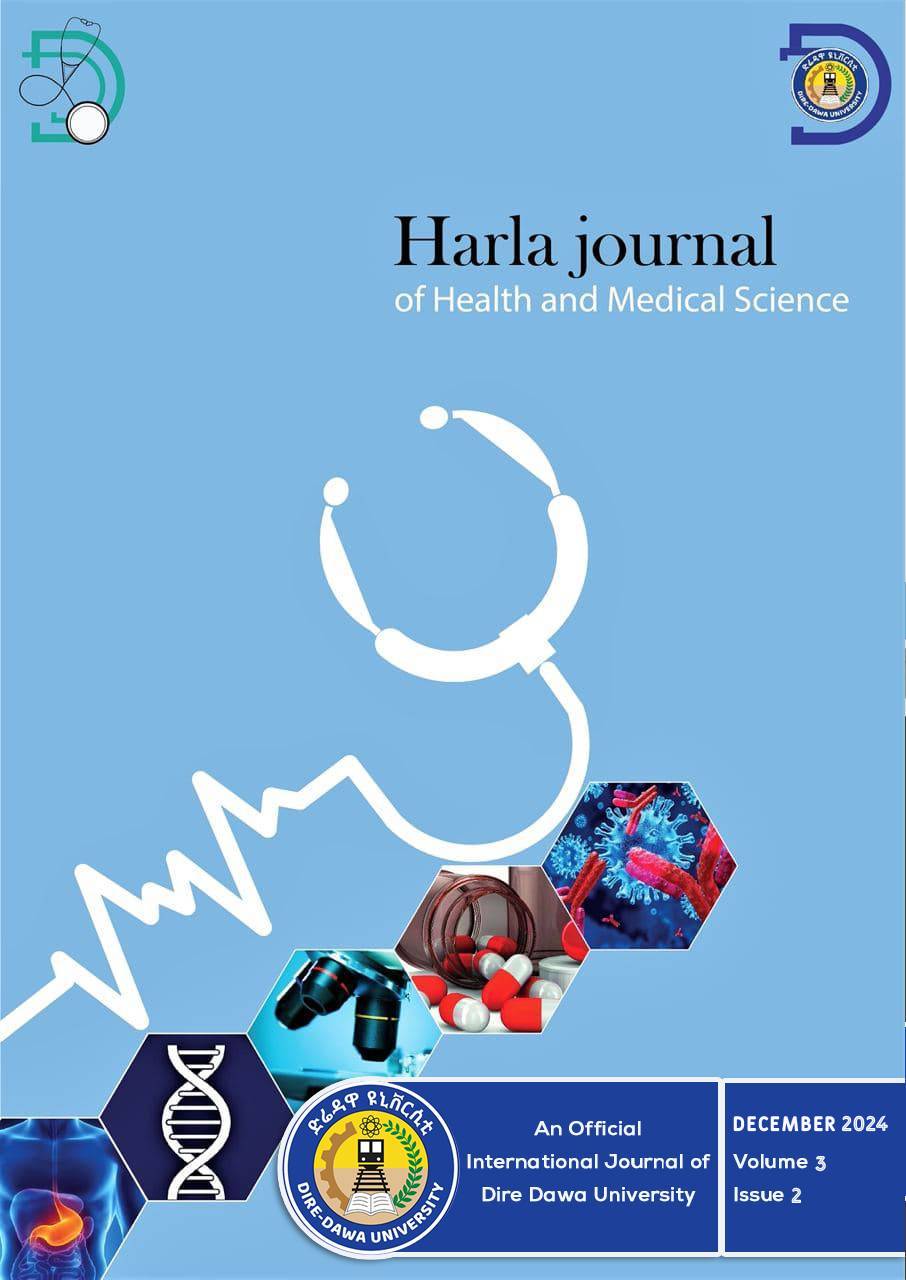Prevalence of Stunting and Associated Factors among Children aged 6-59 Months in Pastoral and Agro-Pastoral Communities in Adigala Woreda, Somali Region, Eastern Ethiopia
DOI:
https://doi.org/10.20372/hjhms.v3i2.181Keywords:
Adigala Woreda, Eastern Ethiopia, Somali Region, Stunting, Under Five ChildrenAbstract
Background: Stunting is as a height that is more than two standard deviations below the World Health Organization median child growth standard. Stunting is the commonest reason for pediatrics hospital admission. Ethiopia is one of the countries in sub-Saharan Africa with the highest rate of stunting. Therefore, the objective of this study is to assess the prevalence of stunting and associated factors among children aged 6-59 months in Sitti zone Adigala Woreda, Somali Region, Eastern Ethiopia.
Methods: A community-based cross-sectional study design was conducted from June 1 to 30, 2024 in Adigala woreda. A simple random sampling technique was used to select 415 children aged 6-59 months with mothers or caregivers. Data were collected using pre-tested structured questionnaire. Data were entered into Epi-data 3.1. Data were cleaned and analyzed using SPSS for windows version 20. Descriptive statistics were calculated for all study variables. Bivariable and multivariable logistic regression analyses were done and the results of the Adjusted Odds Ratio with 95% confidence intervals and P< 0.05 were considered statistically significant.
Results: The prevalence of stunting in this study was 84 (20.2%) (95% CI: 16.5, 24.4). Low average monthly family income (AOR: 3.11, 95% CI: 1.52, 5.39), large family size (>5) (AOR: 2.27, 95% CI: 1.21, 4.27), and not exclusive breast feeding (AOR: 2.01, 95% CI: 1.07, 3.64) were significantly associated with child stunting.
Conclusion: This study demonstrated that the prevalence stunting was high and still a severe public health problem in the study area based on the WHO cutoff point. Low average monthly family income, not exclusively breast-fed children, and living in a large size family (>5) were independent predictors of stunting. Therefore, improving household economic conditions and limiting the number of children need to be considered for reducing stunting among children. It is also crucial to give due emphasis for interventions related to infant and young child feeding with special emphasis for exclusive breast feeding.
Downloads
Published
How to Cite
Issue
Section
License
Copyright (c) 2024 Harla Journals and Author(s)

This work is licensed under a Creative Commons Attribution-NonCommercial 4.0 International License.






